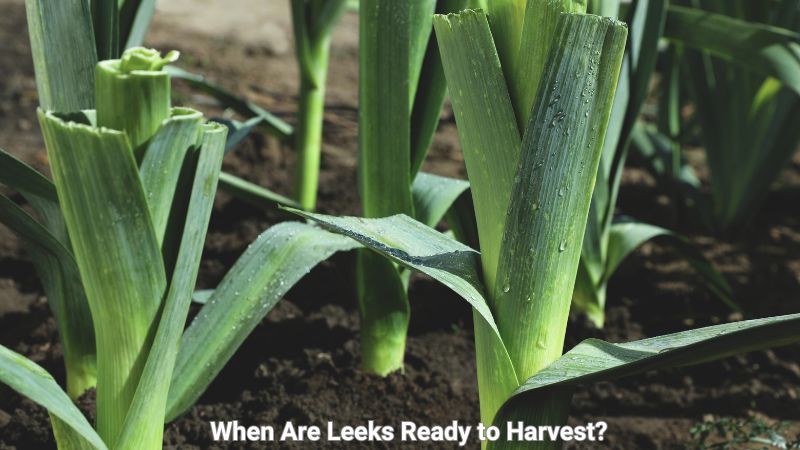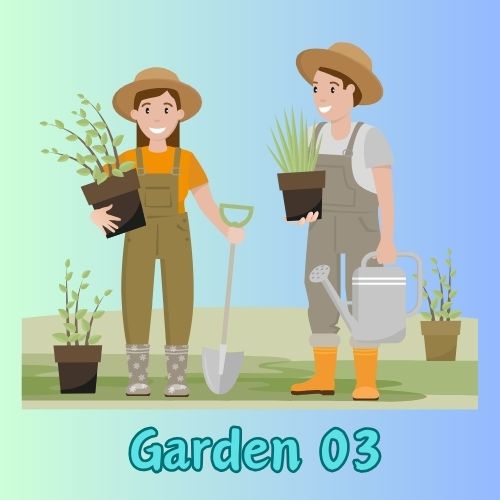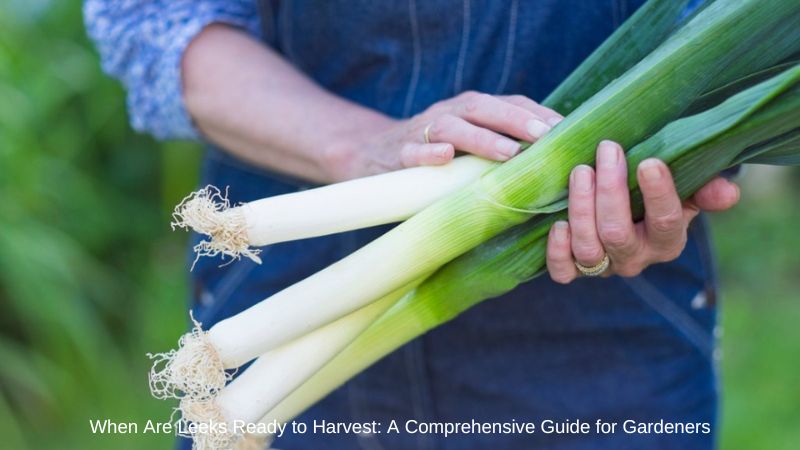Leeks (Allium ampeloprasum var. porrum) are a popular vegetable in the onion family, known for their mild, sweet flavor. They are often used in soups, stews, and salads, adding a unique depth to dishes. However, one common question among gardeners is “when are leeks ready to harvest?” Knowing the right time to harvest leeks is essential for ensuring their best flavor and texture. In this comprehensive guide, Garden 03 will discuss everything you need to know about leek harvesting, including the signs of readiness, the proper harvesting techniques, and tips to extend their growing season.
Understanding Leek Growth Stages
Before diving into when leeks are ready to harvest, it’s important to understand the different stages of leek growth. Leeks are a biennial plant, meaning they take two years to complete their life cycle. However, they are usually grown as annuals and harvested within their first growing season. Leeks are generally started from seeds or transplants and take between 90 to 120 days to reach maturity, depending on the variety and growing conditions.
Leeks grow slowly, and throughout their development, they form long, white, cylindrical stalks, which are the edible part of the plant. The key to harvesting leeks at the right time is to ensure they have developed sufficiently without becoming overgrown or tough.
Factors Affecting Leek Harvest Timing
Before we discuss when are leeks ready to harvest, it’s crucial to understand the factors that influence their growth and maturity:
- Variety of Leeks: Different varieties of leeks have varying maturation times. Some early-maturing varieties may be ready for harvest in as little as 90 days, while others may take up to 150 days.
- Growing Conditions: The time it takes for leeks to mature can be affected by weather, soil quality, and watering practices. Leeks prefer cool temperatures and grow best when daytime temperatures are between 60°F and 70°F (15°C to 21°C).
- Planting Time: When you plant leeks also affects their harvest time. Leeks can be planted in the spring for a summer harvest or in the summer for a fall or winter harvest, depending on your climate.
- Soil Health: Leeks grow best in well-drained, fertile soil rich in organic matter. Ensuring your soil is healthy will help your leeks grow strong and reach maturity at the expected time.
When Are Leeks Ready to Harvest?

The primary question on every gardener’s mind is “when are leeks ready to harvest?” The answer depends on the size, variety, and intended use of the leeks. Here are the key indicators to watch for:
1. Size of the Stalks
Leeks are typically ready to harvest when their stalks are about 1 inch (2.5 cm) in diameter, which is roughly the size of a garden hose or a thick pencil. Some gardeners prefer to harvest leeks when they are smaller and more tender, especially for use in gourmet cooking. These “baby leeks” can be harvested when they are about ½ inch (1.25 cm) thick.
For larger, more mature leeks, you can wait until the stalks reach up to 2 inches (5 cm) in diameter. However, be cautious not to let them grow too large, as they can become tough and fibrous.
2. Color of the Leek
Another key sign that leeks are ready to harvest is their color. Mature leeks should have long, white shafts (the edible portion) and dark green leaves at the top. The white part of the leek should extend several inches up from the base, which can be achieved through a process called “blanching” (more on this later). The green tops should be firm and healthy-looking, without signs of yellowing or browning.
3. Seasonal Timing
Leeks are typically planted in early spring or late summer, depending on your climate. If planted in the spring, leeks should be ready to harvest in mid to late summer. If planted in late summer, leeks can be harvested throughout fall and even into winter in milder climates.
In colder regions, leeks can tolerate light frosts, which can actually improve their flavor by making them sweeter. Some gardeners prefer to leave leeks in the ground until after the first frost, but be sure to harvest them before the ground freezes completely.
4. Days to Maturity
Leek seed packets typically provide an estimated “days to maturity,” which is the number of days from planting to harvest. This can range from 90 to 120 days, depending on the variety. If you’re unsure when to harvest, check the seed packet for guidance and mark the planting date on your calendar.
How to Harvest Leeks
Once you’ve determined that your leeks are ready to harvest, it’s time to learn the proper technique for harvesting them without damaging the plant or the surrounding soil. Here’s a step-by-step guide:
1. Loosen the Soil
Leeks have long roots that extend deep into the soil, so pulling them straight out can be difficult and may damage the plant. Instead, use a garden fork or spade to gently loosen the soil around the base of the leek. Insert the fork about 4 to 6 inches (10 to 15 cm) away from the stalk to avoid cutting into the plant.
2. Lift the Leek Out
Once the soil is loosened, grasp the leek near its base and gently pull upward while wiggling it back and forth. The plant should come out easily if the soil is sufficiently loosened.
3. Trim the Roots and Leaves
After harvesting, trim off the roots and the tough, dark green leaves. The white and light green portion of the stalk is the edible part. You can also save the dark green tops for making vegetable broth or composting.
How to Store Leeks
Once you’ve harvested your leeks, proper storage is essential to keep them fresh and flavorful. Here are some storage tips:
- Refrigeration: Leeks can be stored in the refrigerator for up to two weeks. Wrap them in a damp paper towel and place them in a plastic bag or an airtight container to prevent them from drying out.
- Freezing: If you have a large harvest and want to preserve your leeks for longer, they can be blanched and frozen. To do this, cut the leeks into slices, blanch them in boiling water for 2-3 minutes, then transfer them to an ice bath. Drain and freeze in airtight containers or freezer bags.
- Cold Storage: If you live in a region with cool temperatures, you can leave leeks in the ground and harvest them as needed. Leeks can tolerate light frosts, but be sure to mulch them heavily if you plan to overwinter them in the garden.
How to Extend the Harvest Season for Leeks
If you’re wondering how to extend the leek harvest season, there are several techniques you can use:
1. Succession Planting
Planting leeks in succession, with a few weeks between each planting, can ensure a continuous harvest throughout the growing season. This technique is especially useful if you want to enjoy fresh leeks for an extended period.
2. Blanching Leeks
Blanching is the process of covering the base of the leek stalks with soil or mulch to encourage the development of a longer, white stem. This white portion is tender and mild, making it the most desirable part of the plant.
To blanch leeks, mound soil around the base of the plants as they grow, or use cardboard tubes or plastic collars to shield the stems from light. This helps extend the length of the edible portion.
3. Mulching for Winter Harvest
In regions with mild winters, leeks can be harvested well into the colder months. To protect leeks from frost, apply a thick layer of mulch (such as straw or leaves) around the base of the plants. This will insulate the soil and keep the leeks fresh until you’re ready to harvest them.





